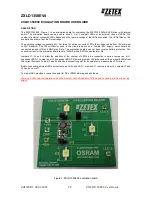
23
ONBOARD
s
An assembly composed of both a cooling fan and a heat sink is
required to protect the CPU from being damaged.
CPU Installation Procedure:
1. Make sure the ZIF socket
lever is up. To raise the lever,
pull it a bit horizontally, and
then as far as it will go
vertically. The top plate will
slide back to open up the
socket.
2. Align the CPU and socket
pin 1 corners. The pins on the bottom of the CPU should align with
the holes in the socket.
3. Insert the CPU into the socket. It should slip in easily. If it does
not, adjust the position of the lever a little.
4. Press the lever down. The top plate will slide forward into its
original position. You will feel some resistance as the CPU is
secured in the socket. This is normal and will not damage the
CPU. The lever should snap into place at the side of the socket.
Cache Memory
The S1573S has 512KB of onboard pipeline-burst SRAM; this SRAM
cannot be upgraded. The TX chipset can cache a maximum of 64MB
of RAM.
Peripheral Device Installation
After all the jumpers on the mainboard have been set, the mainboard
can be mounted into the case. You may then install the display card and
any other peripheral devices that you may have.
If a PCI-BUS interface card is to be installed in the system, any one of
the five PCI-BUS slots can support either a Master or a Slave device.
Note that PCI slot 1 and slot 5 share the same BUS master resource,
Line up these two corners















































